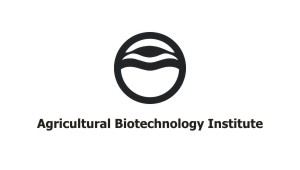ABC - Department for Plant Biotechnology - Plant Developmental Biology Group
Career
Leader of Plant Biotechnology Institute, NAIK Agricultural Biotechnology Center (2011 – present)
Group Leader, Agricultural Biotechnology Center (2008 – present)
Senior Research Associate , Agricultural Biotechnology Center (2001-2008)
EMBO fellow, John Innes Centre, Norwich, UK (1999-2001)
Ph.D. – Biology, St. Stephens University, Gödöllő, (1998)
M.Sc. - University of Horticulture and Food Industry, Budapest, Hungary (1991)
Research Interests
The laboratory is focusing on the understanding of the role and mode of action of small regulatory RNAs in model and economically important plants. The aim of the research is to identify new and conservative small regulatory RNAs and plant factors influencing the development of economically important traits or plant development processes in general. Moreover, we intend to use the CRISPR/Cas9 genome editing technology for basic and applied research purposes especially in barley.
Current Research Projects
Establishment of genome editing in barley and in other crop species for research and crop improvement. (NKFI K125300)
Investigation of the regulation and activity of RNA interference executor complexes in model and crop plants. (NKFI K116602)
Investigation of heat stress associated RNA interference and crop quality determinant genes with genome editing techniques in barley. (NKFI KH1303844)
Establishment of genome editing in barley and in other crop species for research and crop improvement.
The CRISPR/Cas9 system is an efficient, and highly specific genome editing technology which has been introduced into basic and applied sciences with stunning velocity. CRISPR/Cas9 system provides precise genome modifications directly in valuable local cultivars, even the introduction of multiple traits, saving the time-consuming backcrossing procedure of conventional breeding approaches. In addition, the potential of CRISPR/Cas9 to act in transz provides alternative approaches circumventing the drawbacks associated with traditional genetically modified organisms. It is inevitable to establish this ground breaking technology in Hungary and exploits its potential in basic and applied researches. The economically important barley (Hordeum vulgare) will be used to generate CRISPR/Cas9 edited plants by adapting and optimizing the plant tissue culture and molecular technics already available in our laboratory. The genome editing targets will be selected to analyse basic biological processes, RNA interference components, and also assess the efficiency of the technology in trait improvement, such as virus resistance, crop quality etc.. Moreover, wheat, as one of the most important crops in Hungary, will also be used as a target for genome editing.
Investigation of the regulation and activity of RNA interference executor complexes in model and crop plants.
RNA interference is a small non-coding RNA (smRNA) based regulatory system acting in gene expression control, development, abiotic stresses, epigenetic regulation and pathogen defence. SmRNAs, micro (mi) RNAs and small interfering (si) RNAs, regulate their target RNAs by inducing RNA degradation or translational repression. The central component of RNA-induced silencing complex (RISC; the executor complex of RNA interference) is the ARGONAUTE1 (AGO1) protein which is involved in both siRNA and miRNA pathways. AGO1 expression itself is under the control of miRNA a (miR168) suggesting feed-back regulatory mechanism. Our preliminary results indicate some unexpected features of AGO1 regulation compared to canonical miRNA based control and the importance of identification biologically active smRNAs incorporated into the RISCs. Our aim to investigate the fine regulation and tissue specific activity of AGO1 to reveal the specific regulation process lying behind its control and the tissue specific role of AGO1 in developmental processes. Moreover, applying a molecular size separation method RISC bound smRNAs will be retrieved and analysed using next generation sequencing method to investigate the regulatory function of RISC loading. We will establish a new type of gain-of-function mutant screen to identify factors modulating the activity RNA interference pathway. One of the most important efforts is to transfer the gained results to economically important crops hence crop plants, such as pepper and wheat, will be investigated.
Investigation of heat stress associated RNA interference and crop quality determinant genes with genome editing techniques in barley.
The utilization of genome editing technologies for efficient generation of site directed mutagenesis is a major advance in recent history of molecular biology. We are carrying out experiments for establishing barley genome editing in our laboratory and we would like to extend these experiments. By comparative bioinformatics approaches we will identify barley RNA interference factors, focusing mainly on DCL, AGO and RDR genes. We will identify heat stress related RNA interference factors by targeted gene expression analyses of heat stress treated wild type barley plants. The identified genes will be mutated by genome editing and mutant plants will be investigated under stress conditions to reveal the role of candidate genes in stress response. The genome editing technologies will also be used for coordinated knock-out SIX-ROWED SPIKE (VRS) gene. These mutation may result in increased lateral grain size and greater grain uniformity. To enhance the reliability of our experiments we plan, based on published functional studies of Cas9, to elaborate a high fidelity modified plant specific Cas9 construct.
Staff
Publications
Publications (2005 – present)
Kis A, Hamar É, Tholt G, Bán R, Havelda Z. (2019) Creating highly efficient resistance against wheat dwarf virus in barley by employing CRISPR/Cas9 system. Plant Biotechnol J. 2019 Jan 11. doi: 10.1111/pbi.13077. (IF 6.3)
Taller D, Bálint J, Gyula P, Nagy T, Barta E, Baksa I, Szittya G, Taller J, Havelda Z. (2018) Expansion of Capsicum annum fruit is linked to dynamic tissue-specific differential expression of miRNA and siRNA profiles. PLoS One. 2018 Jul 25;13(7) (IF 2.8)
Tholt G, Kis A, Medzihradszky A, Szita É, Tóth Z, Havelda Z, Samu F. (2018) Could vectors' fear of predators reduce the spread of plant diseases? Sci Rep. 2018 Jun 7;8(1):8705. (IF 4.1)
Oláh E, Pesti R, Taller D, Havelda Z, Várallyay É. (2016) Non-targeted effects of virus-induced gene silencing vectors on host endogenous gene expression. Arch Virol. 2016 Jun 9. (IF 2.2)
Nagy T, Kis A, Poliska S, Barta E, Havelda Z, Marincs F. (2016) Comparison of small RNA next-generation sequencing with and without isolation of small RNA fraction. Biotechniques. Jun 1;60(6):273-8. (IF 2.9)
Baksa I, Nagy T, Barta E, Havelda Z, Várallyay É, Silhavy D, Burgyán J, Szittya G. (2015) Identification of Nicotiana benthamiana microRNAs and their targets using high throughput sequencing and degradome analysis. BMC Genomics. 16:1025. (IF 3.8)
Kis A, Tholt G, Ivanics M, Várallyay É, Jenes B, Havelda Z. (2016) Polycistronic artificial miRNA-mediated resistance to Wheat dwarf virus in barley is highly efficient at low temperature. Mol Plant Pathol. 17. (3):427-37. (IF 4.3)
Tombácz D, Csabai Z, Oláh P, Havelda Z, Sharon D, Snyder M, Boldogkői Z. (2015) Characterization of novel transcripts in pseudorabies virus. Viruses. 22;7(5):2727-44.
Éva Várallyay, Enikő Oláh and Zoltán Havelda (2014): Independent paralleled functions of p19 plant viral suppressor of RNA silencing required for effective suppressor activity. Nucleic Acids Res. 2013 Sep 22. 42: pp. 599-608. (IF:8,278)
Péter Vilmos, Ágnes Bujna, Milán Szuperák, Zoltán Havelda, Éva Várallyay, János Szabad, Lucie Kucerova, Kálmán Somogyi, Ildikó Kristó,Tamás Lukácsovich, Ferenc Jankovics, László Henn,Miklós Erdélyi (2013):The miR-282 Drosophila melanogaster microRNA gene regulates viability, longevity, and egg production. Genetics. 2013 Oct;195(2):469-80. doi: 10.1534/genetics.113.153585. Epub 2013 Jul 12. PMID: 23852386 (IF:4,007)
Akos Agyi, Zoltan Havelda (2013): Analyses of gradient like expression of miR167 in Arabidopsis thaliana embryonic tissue. Journal of Plant Biology October 2013, Volume 56, Issue 5, pp 336-344
Éva Várallyay and Zoltán Havelda (2013): Unrelated viral suppressors of RNA silencing mediate the control of ARGONAUTE1 level . Molecular Plant Pathology 2013 Aug;14(6):567-75. doi: 10.1111/mpp.12029. Epub 2013 Apr 11. (IF:3,899)
Zsolt Czimmerer, Julianna Hulvely, Zoltan Simandi, Eva Varallyay, Zoltan Havelda, Erzsebet Szabo, Attila Varga, Balazs Dezso, Maria Balogh, Attila Horvath, Balint Domokos, Zsolt Torok, Laszlo Nagy, Balint L. Balint (2013). A versatile method to design stem-loop primer-based quantitative PCR assays for detecting small regulatory RNA molecules. PLoS One. 2013;8(1):e55168. doi: 10.1371/journal.pone.0055168. Epub 2013 Jan 31.PMID: 23383094 (IF:4,092)
Burgyán, J. and Havelda Z (2011) Viral suppressors of RNA silencing Trends in Plant Science Volume 16, Issue 5, May 2011, Pages 265-272 (IF:10,095)
Várallyay E, Válóczi A, Agyi A, Burgyán J and Havelda Z (2010) Plant virus-mediated induction of miR168 is associated with repression of ARGONAUTE1 accumulation. The EMBO Journal , 20;29(20):3507-19. (IF:10,124)
Varallyay E*, Lichner Z, Safrany J, Havelda Z, Salamon P, Bisztray G, Burgyan J. (2010) Development of a virus induced gene silencing vector from a legumes infecting tobamovirus. Acta Biologica Hungarica, 2010 61(4) 457-469 (IF:0,551)
Havelda Z, Varallyay E, Valoczi A and Burgyan J (2008) Plant virus infection-induced persistent host gene downregulation in systemically infected leaves. Plant Journal, 55:(2) pp. 278-288. (IF:6,75)
Várallyay E., Burgyan J. and Havelda Z. (2008) MicroRNA detection by northern blotting using locked nucleic acid probe. Nature Protocols, 3:(2) 190-196. (IF:4,17)
Várallyay E., Burgyan J. and Havelda Z. (2007) Detection of microRNAs by northern blot analyses using LNA probes. METHODS: A COMPANION TO METHODS IN ENZYMOLOGY, 43 (2) : 140-45 (IF:3,81)
Valoczi A, Varallyay E, Kauppinen S, Burgyan J, Havelda Z. (2006) Spatio-temporal accumulation of microRNAs is highly coordinated in developing plant tissues. Plant J. 47(1):140-51. (IF:6,97)
Reviews and bookchapters
Várallyay E. and Havelda Z. (2011) Detection of microRNAs in plants by in situ hybridisation. .In MicroRNAs in Development. Methods in Molecular Biology 732, Humana Press, (Edited by Tamas Dalmay) pp. 9-23.
Havelda Z. (2010) In situ detection of miRNAs using LNA probes. In Plant MicroRNAs. Methods in Molecular Biology 592, Humana Press, (Edited by Pamela Green and Blake C. Meyers) pp. 127-136.
Havelda Z. (2009) Biogenesis and function of plant microRNAs. In Regulation of Gene Expression by Small RNAs., CRC press, (Edited by Dr. John Rossi and Rajesh K. Gaur) 173-196.
Kauppinen S. and Havelda Z. (2008) Detection of siRNAs and miRNAs. Plant Virology Protocols in the Methods in Molecular Biology, Humana Press, (Edited by P. Nagy, G. Foster and E. Johansen) pp. 217-227.
Maule A.J. and Havelda Z. (2008) In situ detection of plant viruses and virus-specific products. Plant Virology Protocols in the Methods in Molecular Biology, Humana Press, (Edited by P. Nagy, G. Foster and E. Johansen) pp. 201-216 .
Wheeler G, Valoczi A, Havelda Z and Dalmay T. (2007) In situ detection of animal and plant microRNAs. DNA and Cell Biology, 26(4):251-5.

